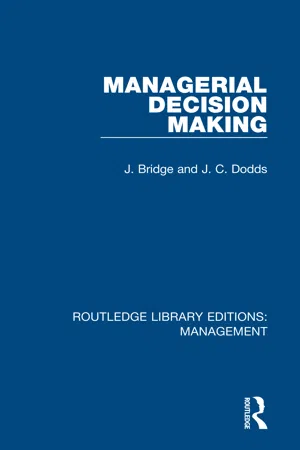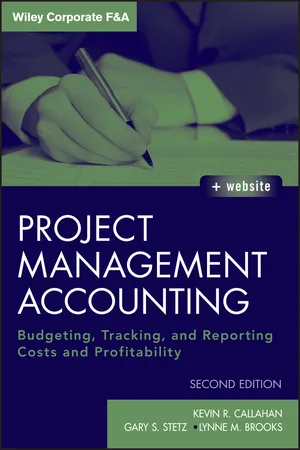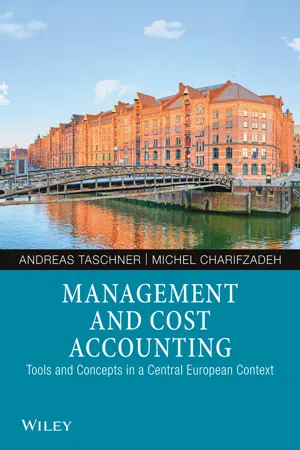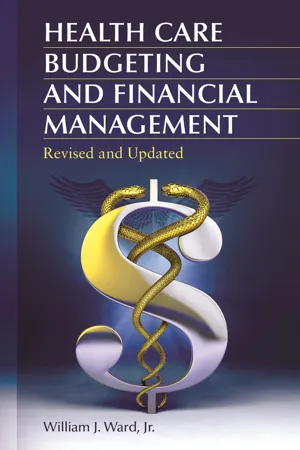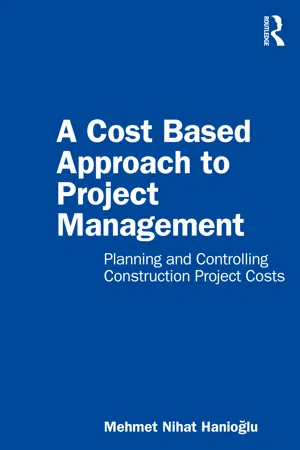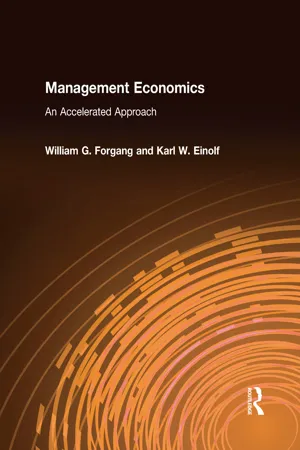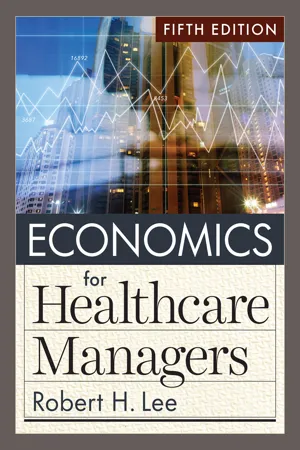Business
Cost
Cost refers to the expenditure incurred in the production of goods or services. It encompasses various expenses such as raw materials, labor, and overhead. Understanding and managing costs is crucial for businesses to ensure profitability and efficiency in operations. By analyzing and controlling costs, businesses can optimize their resources and improve their financial performance.
Written by Perlego with AI-assistance
Related key terms
8 Key excerpts on "Cost"
- eBook - ePub
- J. Bridge, J. C. Dodds(Authors)
- 2018(Publication Date)
- Routledge(Publisher)
4 Cost Analysis 4-1 Introduction Cost in its broadest sense means sacrifice, typically a sacrifice of purchasing power, but it is important to think of the wider meaning because it is possible to incur Costs without any transfer of cash taking place. Business decisions revolve around private Costs which include all outlays made by the firm on materials, labour, land, capital, energy and so on. Social Costs, i.e. those sacrifices made by society, to enable businesses to operate include damage to the environment through smoke and waste products, spoilage of the appearance of the landscape, congestion of roads, and disruption of community life. Any organisation with an objective of public responsibility will of course pay heed to social Costs such as these, but in so far as they do not influence the profits of a firm directly they tend to take second place to private Costs which do have a direct influence on the well-being of the organisation. The usual problems of estimation and informational deficiencies are compounded by the lack of an unequivocal definition of Cost. In practice it is impossible to give a straightforward answer to the question, ‘What is the Cost of producing this item?’ This applies to the book you are now reading, the table at which you are sitting and indeed almost any other manufactured product you could mention. Yet for purposes of Cost control or managerial decision making it is vital that some financial measure is ascribed to Cost. It is rather easier to provide figures for control purposes than it is for evaluation of alternatives since control relies on comparison of reality with predetermined standards to detect variations from the desired state of affairs (see Chapter 1). So long as some benchmark for product Cost is set the control system can be workable through the detection of variances. Consequently managers must be very wary when evaluating alternatives, of using Cost information prepared by accountants largely for control purposes - eBook - ePub
Project Management Accounting
Budgeting, Tracking, and Reporting Costs and Profitability
- Kevin R. Callahan, Gary S. Stetz, Lynne M. Brooks(Authors)
- 2011(Publication Date)
- Wiley(Publisher)
It is important to remember that Cost may be quite different as it applies to projects, compared to operations. Projects are unique endeavors with a beginning and end that produce a deliverable. Operations, however, are the ongoing business processes that produce goods and services in a repetitive manner. Producing cars in a factory is operations; creating the prototype of a new car is a project. As we explore the different facets of Cost, we will also look at how that knowledge can be useful to project managers. In this chapter, we introduce the basics of Cost and help project managers better understand how those basics may relate to their projects.Definition and Purpose of Cost
Cost is the measurement of resources that must be expended in order to obtain an object or complete an activity. Cost is usually expressed in monetary terms, as in employee time; the materials to manufacture an object may be represented by their monetary value.Cost normally falls into the domain of managerial accounting and has four essential purposes.- It is used for planning for future activities or budgets.
- It is used for decision making throughout an organization.
- It is used to compare actual results with budgets and determine why there are variances.
- It is used to calculate income from the company's operations and projects.
The nature and form of Cost can vary across organizations. In the United States, there are three basic types of organizations: manufacturing, retail, and service. Although manufacturing once was the greatest portion of the U.S. economy, the retail sector is also significant, and the service sector now actually makes up the largest portion of the economy.Cost Classifications
Costs are classified according to the purpose of the Cost information that is sought (see Exhibit 4.2 - eBook - ePub
Management and Cost Accounting
Tools and Concepts in a Central European Context
- Andreas Taschner, Michel Charifzadeh(Authors)
- 2020(Publication Date)
- Wiley-VCH(Publisher)
Indirect Costs Indirect Costs are related to the particular Cost object but cannot be traced to it in an economically feasible way.Marginal CostThe additional Costs incurred when producing one additional unit of output.Opportunity CostThe foregone benefit of the best possible alternative use of a resource.Outlay CostA Cost item that leads to a corresponding cash payment.PaymentAny decrease of liquid funds (cash outflow) of the company.Period CostCost items that are treated as an expense in the period they occur.Predicted CostsThe expected future Cost that is assumed to be mainly beyond the company's influence.ProceedAny increase in monetary assets of the company (cash plus receivables minus obligations).Product CostThe Cost of producing outputs. When output is sold, product Cost determines the Cost of sales. When the output is put in stock, product Costs are used to determine inventory values.ReceiptAny increase of liquid funds (cash inflow) of the company.RevenueAny increase in economic benefits that is due to regular company operations and therefore leads to an increase in required assets.Standard CostThe intended future Cost level that is achievable under efficient operating conditions.Step-fixed CostA Cost item that remains constant within a certain activity range and increases to a next-higher level, if the activity level increases beyond that activity range.Sunk CostCost that has already been incurred and that cannot be changed by any future decision.Unit CostThe average Cost per unit of output. Unit Cost is determined by relating total Cost to the total output quantity.Variable CostVariable Costs depend on the output volume and therefore change in line with the company's activity level.REVIEW QUESTIONS
- R1.Give examples of how management uses unit Costs for analysis.
- R2.
- eBook - ePub
- William J. Ward Jr.(Author)
- 2015(Publication Date)
- Praeger(Publisher)
Figure 3.2As volume rises, revenue grows in direct proportion to the volume because it is 100% variable with volume. Cost, on the other hand, rises and falls at a far slower rate because is it largely fixed. Knowing this allows for the development of better strategies to guide the business.Knowing how Costs behave, understanding the influence a manager can have on those Costs, and understanding the relationships between Costs and revenue and Costs and volume will allow managers and leaders to select appropriate strategies for controlling and/or reducing Costs and for seeking out appropriate levels of business volume to achieve operating efficiencies and improve bottom-line performance.Important Cost Concepts
The Cost of a service can be described in four different ways: Average Cost, marginal Cost, opportunity Cost, and standard Cost. Each provides an answer to a different question and each is designed for a different purpose.Average Cost identifies the Cost of producing a single unit of work output—the average unit. To determine average Cost, the total Cost of providing a service is divided by the total number of services provided. In the ICU, for instance, the Cost per case is determined by dividing the Cost of running the ICU (salaries, fringe benefits, supplies, services, etc.) by the number of cases cared for. This provides an overall approximation of the Cost per unit of service, which is essential if comparisons are to be made to other providers. Is the Cost higher or lower than other providers? If higher, what causes that? Can the unit Cost be lowered in order to be more competitive? Are economies or diseconomies at play? Average Cost is useful in determining competitiveness and the direction of unit performance.Marginal Cost, on the other hand, looks at the Cost of producing not the average unit, but rather the very next unit of output. It is calculated by dividing only the variable - eBook - ePub
A Cost Based Approach to Project Management
Planning and Controlling Construction Project Costs
- Mehmet Nihat Hanioglu(Author)
- 2022(Publication Date)
- Routledge(Publisher)
3 Understanding Cost and Its ElementsDOI: 10.1201/9781003172710-3Introduction
Planning is the starting point in the project management process. Planning starts with breaking down the scope into activities, preparing the Cost estimate for and establishing the time relationship between them. But everybody knows the close relationship between time and money. The Cost of a project will highly depend on its duration, or the duration of a project depends on its Cost: the resources allocated to its activities.Unless it is specifically prioritized, project Cost and duration are almost equally important for all stakeholders. Project managers may choose Cost or duration as their initial criterion for planning a project. However, regardless of which constraint is chosen, the other constraint needs to be verified against the results obtained from the planning of the first one.This chapter includes a detailed analysis of the two elements of any Cost, defines perception of Cost and price for buyers and sellers, and compares value against Cost and price. It also presents how the elements of a Cost can be used for both Cost and time planning and control.Cost Is More Than a Dollar Amount
Especially Cost information on human and other resources are crucial for Cost and time optimization. Once established, the schedule, budget, and other resource allocations can be used as the performance references and they can be used to monitor project progress. Also, the feedback obtained by monitoring actual progress can be used to tweak and improve performance.The most common definition for “Cost” can be simplified as it is the resources to be expended for obtaining some goods and/or services. One commonality in Cost definitions is that the resources to be expended is expressed as a dollar (money) amount. In this context the words “product”, “goods”, and “service”, as well as “money” and “dollars”, are used interchangeably. In some rare cases the Cost may be expressed in some measure other than money. One could say: “It will Cost us 2 hours to take that route” expressing the Cost in terms of time. This is especially important in cases where the duration to complete a task is more important than the amount of money spent to accomplish it. Likewise, one could also say: “It will save - eBook - ePub
Management Economics: An Accelerated Approach
An Accelerated Approach
- William G. Forgang, Karl W. Einolf(Authors)
- 2015(Publication Date)
- Routledge(Publisher)
5The Costs of Production
This chapter examines the relationship between Costs and output and discusses how a firm’s Costs of production influence production, pricing, and competitive strategy decisions.Learning ObjectivesThe successful reader understands:• The relationship between Costs and output• How Costs affect production and pricing decisions• How Costs affect the number and relative size of competitors in a market• How the structure of Costs helps to define a firm’s competitive strategyThe primary question in this chapter is how Costs vary with output. The answer depends upon the economic time period . Economists recognize four distinct time periods: the market period, the short run, the long run, and the very long run. The time period distinctions do not coincide with calendar time. Rather, the time periods refer to degrees of flexibility in the production process. Other topics in this chapter include the relationship between the Costs of production and the number and relative size of firms in an industry as well as the business strategy implications of a firm’s Costs of production.Accounting and Economic CostsBefore examining the economic time periods, it is necessary to establish that economists view Costs differently than accountants do. Economists include opportunity Costs, which affect the allocation of finite resources among competing uses.Consider the video rental store in Table 5.1 . This store’s gross sales revenue is $100,000. The direct payments for rent, videos, utilities, and labor total $80,000.Table 5.1 Explicit Costs and Accounting ProfitIncome Statement Item $ Gross sales revenue $100,000 • Rent, materials, labor, and utilities $80,000 Accounting profit $20,000 Table 5.1 shows the video store’s profit is $20,000. This calculation is the accountant’s definition of profit. Accountants consider only direct payments. In Table 5.1 - eBook - ePub
- John A. Tracy, Cecile Laurin(Authors)
- 2019(Publication Date)
- For Dummies(Publisher)
However, a decision alternative being considered might involve a change in fixed Costs, such as moving out of the present building used by the business, downsizing the number of employees on fixed salaries, spending less on advertising (generally a fixed Cost), and so on. Any Cost, fixed or variable, that would be different for a particular course of action being analyzed is relevant for that alternative. Furthermore, keep in mind that fixed Costs can provide a useful gauge of a business’s capacity — how much building space it has, how many machine-hours are available for use, how many hours of labour can be worked, and so on. Managers have to figure out the best way to utilize these capacities. For example, suppose your retail business pays an annual building rent of $200,000, which is a fixed Cost (unless the rental contract with the landlord also has a rent escalation clause based on your sales revenue). The rent, which gives the business the legal right to occupy the building, provides 15,000 square feet of retail and storage space. You should figure out which sales mix of products will generate the highest total margin — equal to total sales revenue less total variable Costs of making the sales, including the Costs of the goods sold and all variable Costs driven by sales revenue and sales volume. Actual, budgeted, and standard Costs The actual Costs a business incurs may differ (though we hope not too unfavourably) from its budgeted and standard Costs: Actual Costs: Actual Costs are based on actual transactions and operations during the period just ended, or going back to earlier periods. Financial statement accounting is mainly (though not entirely) based on a business’s actual transactions and operations; the basic approach to determining annual profit is to record the financial effects of actual transactions and allocate the historical Costs to the periods benefited by the Costs - eBook - ePub
- Robert H. Lee(Author)
- 2023(Publication Date)
- AUPHA/HAP Book(Publisher)
The insurer focuses on its share of the retail price and its Cost of paying the bill. Again, the insurer should factor in the opportunity Cost of using its investment to provide pharmacy insurance benefits, but it will probably express this figure in terms of a required return on investment. From the perspective of the insurer, covering the prescription adds $21 in Costs. From the perspective of the consumer, insurance coverage reduces Costs by $11. Society’s perspective on Costs also differs from the perspective of any of the participants when insurance plays a role. Society adds the processing and asset Costs that the insurer incurs, making the total $30.The concept of Cost cannot be fully understood without stating a Cost perspective. The part of Cost that matters depends on your point of view. Your revenues are someone else’s Costs, and your Costs are someone else’s revenues.Most people want to focus on Costs from the perspective of the organization in which they work, but shifting Costs to customers or suppliers seldom represents a good business strategy. Long-term business success rests on selling products that offer your customers excellent value and offer your suppliers adequate profits.As stated earlier, the difficulty of measuring Cost components also complicates the concept of Costs. For example, opportunity Costs are sometimes hard to measure. Managers sometimes become confused when calculating the opportunity Cost of resources that have changed in value. For example, land that your organization bought a few years ago may be more valuable if rents in the area have risen or less valuable if rents have fallen. In most cases, though, an input’s opportunity Cost is simply its market price.Linking the use of a resource to the organization’s output also poses problems. A focus on incremental Costs (i.e., the Cost of the additional resources you use when you increase output by a small amount) often simplifies this task. “How much more of a hospital’s information system does its intensive care unit use when it cares for an additional patient?” is an example of a way to reframe the relationship between resource use and output and facilitate its measurement.
Learn about this page
Index pages curate the most relevant extracts from our library of academic textbooks. They’ve been created using an in-house natural language model (NLM), each adding context and meaning to key research topics.
